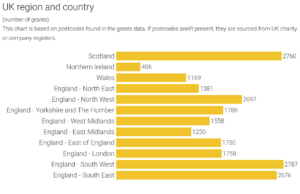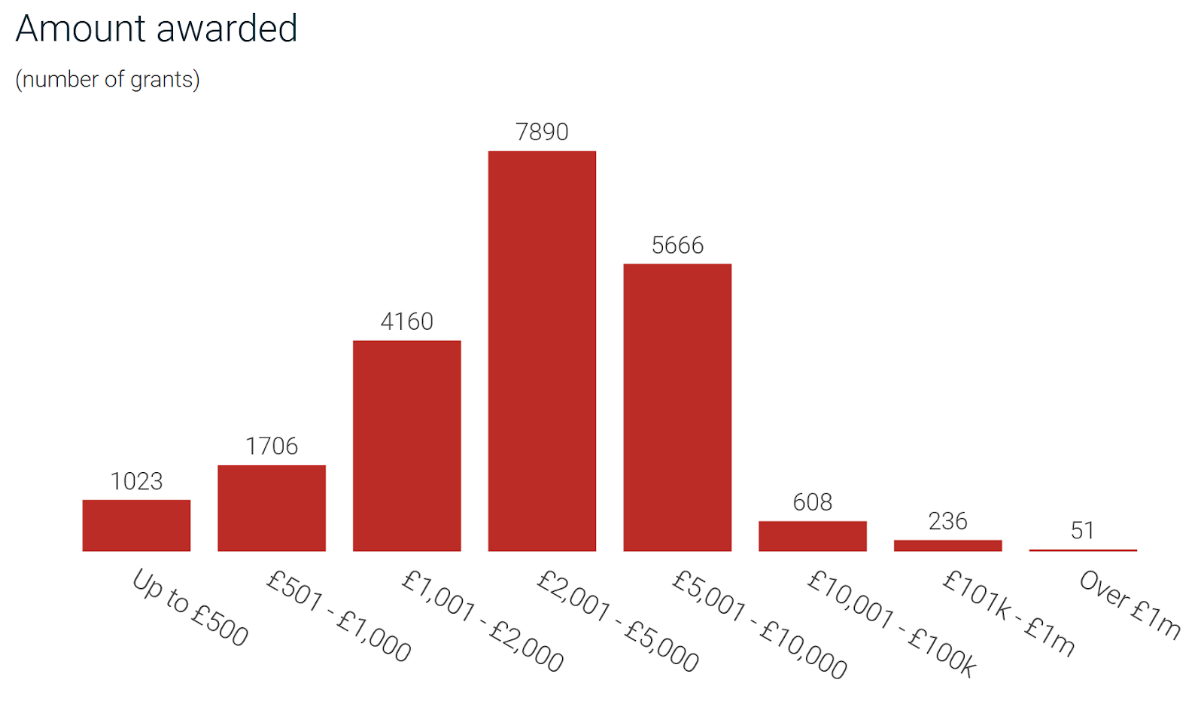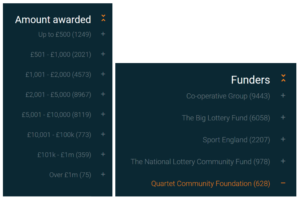‘Below the Radar’: understanding some of the UK’s smallest charities
In a new report, published today, we’ve set out a process for discovering and analysing ‘below the radar’ organisations working in communities across the UK.
The report uses 360Giving data – published openly by UK funders in the 360Giving Data Standard – to identify a set of organisations that receive grants from UK foundations but couldn’t be found using other administrative sources (such as registries of regulated organisations, like charities). The report was funded by Local Trust and carried out by 360Giving and NCVO.
In this post, we set out how you can explore the data using our free tool, 360Insights.
Categorise the data
The data that powers the report is a snapshot of all the data published by funders in the 360Giving Data Standard by February 2020. We restricted the data to grants made between January 2016 and December 2019. Then we applied one of five categories, based on the status of the grant recipient. You can find out more about how the categories were created in the full report. The categories are:
- Below the radar organisations: Those organisations that are not registered with any Regulator. These are the main focus of the report.
- Registered grassroots: Organisations that are registered with a regulator but there is only minimum information available. This includes charities, parish councils, and sports clubs. They tend to receive small scale grants.
- Registered charities: Organisations that are registered with the Charity Commission but excludes those that are included as ‘registered grassroots’.
- Education: Schools and universities.
- Others: Companies, Community Interest Companies, mutuals, cooperatives, Local Authorities.
You can download a ZIP file containing a CSV file with the grants from each of these categories, alongside a description of the columns in the files. Because the data comes from a number of different 360Giving data publishers, the licence details for each row of data is also included.
Analyse the data using 360Insights
One way to examine these files is using 360Insights, our free data analysis tool. Because the data we’ve made available from the project is also in the 360Giving Data Standard, you can easily upload and explore it using 360Insights. Here’s a report I prepared earlier which contains details of all the “registered grassroots” organisations found in the data.
With 360Insights it’s easy to filter and explore the data.
You can view which regions have received grants:

You can also see the amount of funding these organisations received:

You can use the filters on the left hand side to show the results for only parts of the data. Here’s the filter for ‘Amount awarded’ – you could also look at the results for one funder (note that the grants from the National Lottery Community Fund are shown under both the old and new names).

The importance of good quality data
This data and the report is only possible because of 360Giving and the hard work of funders publishing data about their grants in the 360Giving Data Standard. We’re very excited about the ways in which people can use the data in future, such as exploring grants made to unregistered organisations.
The report also shows how important data quality is. Compared to five years ago, when this exercise last happened, there’s been a massive improvement in the quality of the 360Giving data published, which makes it easier to perform this kind of analysis. But there’s still more to do – simple things like adding robust organisation identifiers to the data (like charity numbers) or geographical information (like postcodes) make the data much more useful.
We’re excited to see how you could use this data. Please do share what you do with the report and the data, using the hashtag #BelowTheRadar.
